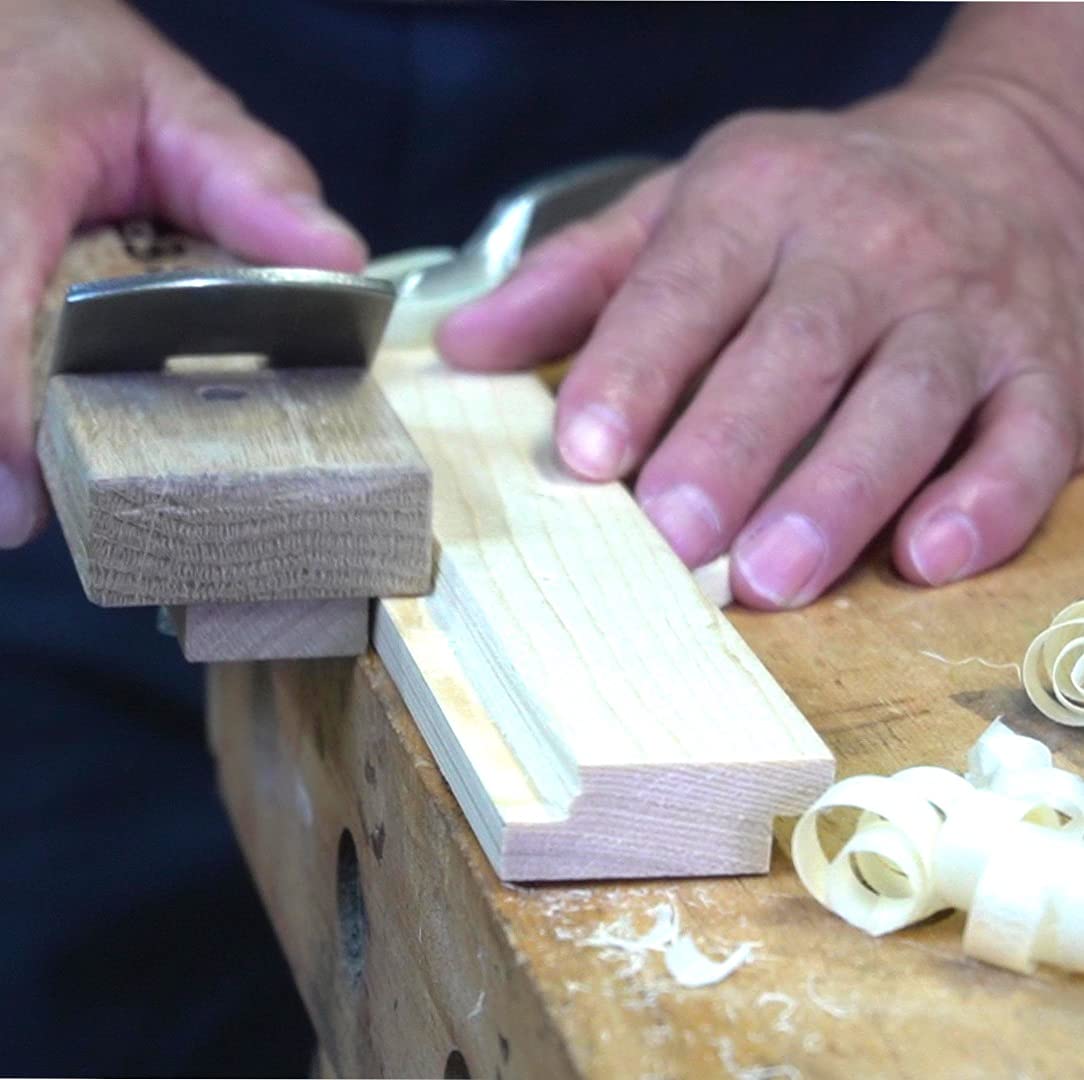







🛠️ Elevate Your Woodworking Game with KAKURI!
The KAKURI Rabbet Plane is a premium Japanese hand tool designed for precision woodworking. With an adjustable double-sided blade and a razor-sharp high carbon steel edge, this plane allows for clean, accurate cuts. Its ergonomic pull-plane design makes it easy to use, while the oak body ensures durability. Perfect for both professional woodworkers and DIY enthusiasts, this tool embodies the craftsmanship of Japanese artisans.
| Brand | KAKURI |
| Material | High Carbon Steel |
| Color | Light Brown |
| Product Dimensions | 8.2"L x 2"W x 2.3"H |
| Item Weight | 0.29 Kilograms |
| Style | Woodworking |
| Power Source | Manual Winding |
| Base Material | Japanese white oak |
| Cutting Depth | 0.47 Inches |
| Included Components | Blade |
| Cutting Width | 0.47 Inches |
| Manufacturer | KAKURI |
| Part Number | 40859 |
| Item Weight | 10.2 ounces |
| Country of Origin | Japan |
| Blade Length | 12 Millimeters |
| Batteries Required? | No |
P**A
Herramienta útil para hacer marcos para espejos
herramienta a útil aunque rudimentaria para hacer los cantos de los marco para espejos y/o cuadros.
B**Z
Light and easy in your hands!
Exceptionally sharp and effortless! Smooth plane action delivering a very nice result! This tool is designed to be pulled, not pushed to get it to work right. You'll need a hammer to adjust the blade as described in the pamphlet's instructions. Follow the instructions that comes with the tool and you won't be disappointed.
J**L
It works but over priced
Doesn’t sound like a Japanese tool.Very basic design and function to just make it work. Wood surface not even sanded smoothly. Wood thorn on surfaces. Blade shall be sharpen for use. Blade locking mechanism is simplest, not very effective.
M**A
Works great, but needs modifications
Out of the box the blade was razor sharp with a very snug fit. I made some test cuts and the performance was flawless.Two downsides:1) The sliding fence is too narrow so the opposite side blade is always exposed. The tool is small so you need to wrap your hand around it, but then you run the risk of cutting yourself. I made a new, wider fence to adequately cover the exposed blade and everything’s perfect.2) The blade is back beveled. I don’t think I’ve ever seen a back beveled, Japanese iron. The back bevel makes the effective cutting angle around 45 degrees. Which is good for reducing tear out, but makes the pull a little tougher compared to a traditional, low angle kanna.
Trustpilot
2 weeks ago
2 days ago